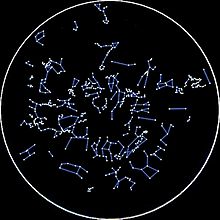
Jean-François Champollion, also known as Champollion le jeune, was a French philologist and orientalist, known primarily as the decipherer of Egyptian hieroglyphs and a founding figure in the field of Egyptology. Partially raised by his brother, the scholar Jacques Joseph Champollion-Figeac, Champollion was a child prodigy in philology, giving his first public paper on the decipherment of Demotic in his mid-teens. As a young man he was renowned in scientific circles, and spoke Coptic, Ancient Greek, Latin, Hebrew and Arabic.

Nephthys or Nebet-Het in ancient Egyptian was a goddess in ancient Egyptian religion. A member of the Great Ennead of Heliopolis in Egyptian mythology, she was a daughter of Nut and Geb. Nephthys was typically paired with her sister Isis in funerary rites because of their role as protectors of the mummy and the god Osiris and as the sister-wife of Set.

Hatmehit or Hatmehyt was an Ancient Egyptian goddess associated with the city in the Nile Delta known as Djedet or Mendes.

Antoine Isaac, Baron Silvestre de Sacy, was a French nobleman, linguist and orientalist. His son, Ustazade Silvestre de Sacy, became a journalist.

Psamtik II, known by the Graeco-Romans as Psammetichus or Psammeticus, was a king of the Saite-based Twenty-sixth Dynasty of Egypt. His prenomen, Nefer-Ib-Re, means "Beautiful [is the] Heart [of] Re." He was the son of Necho II.

Jean Antoine Letronne was a French archaeologist.

Dendera, also spelled Denderah, ancient Iunet 𓉺𓈖𓏏𓊖 “jwn.t”, Tentyris or Tentyra is a small town and former bishopric in Egypt situated on the west bank of the Nile, about 5 kilometres (3 mi) south of Qena, on the opposite side of the river. It is located approximately 60 kilometres (37 mi) north of Luxor and remains a Latin Catholic titular see. It contains the Dendera Temple complex, one of the best-preserved temple sites from ancient Upper Egypt.

The Dendera Temple complex is located about 2.5 kilometres (1.6 mi) south-east of Dendera, Egypt. It is one of the best-preserved temple complexes of ancient Egypt. The area was used as the sixth nome of Upper Egypt, south of Abydos.
The year 1802 in archaeology involved some significant events.

The decans are 36 groups of stars used in the ancient Egyptian astronomy to conveniently divide the 360 degree ecliptic into 36 parts of 10 degrees each, both for theurgical and heliacal horological purposes. The decans each appeared, geocentrically, to rise consecutively on the horizon throughout each daily earth rotation. The rising of each decan marked the beginning of a new decanal "hour" of the night for the ancient Egyptians, and they were used as a sidereal star clock beginning by at least the 9th or 10th Dynasty.
A mammisi (mamisi) is an ancient Egyptian small chapel attached to a larger temple, built from the Late Period, and associated with the nativity of a god. The word is derived from Coptic – the last phase of the ancient Egyptian language – meaning "birth place". Its usage is attributed to the French egyptologist Jean-François Champollion (1790–1832).
Jean-Jacques Castex was a French sculptor.

The Luxor Obelisks are a pair of ancient Egyptian obelisks, over 3,000 years old, carved to stand either side of the portal of the Luxor Temple in the reign of Ramesses II. The right-hand (western) stone, 23 metres (75 ft) high, was moved in the 1830s to the Place de la Concorde in Paris, France, while the left-hand (eastern) obelisk remains in its location in Egypt.
Éric Aubourg is a French astrophysicist at the Commissariat à l'Énergie Atomique and a member of the APC/Université Paris-Diderot Cosmology Group.
Christiane Ziegler, is a French Egyptologist, curator, director emeritus of the Department of Egyptian Antiquities of the Louvre Museum and editorial director of the archaeological mission from the Louvre Museum at Saqqara, Egypt.

Antoine-Jean Saint-Martin was a French academic, orientalist, and pioneer in the field of what would be known as Armenian Studies.
The memorial temple of Ramesses III at Medinet Habu contains a minor list of pharaohs of the New Kingdom of Egypt. The inscriptions closely resemble the Ramesseum king list, which is a similar scene of Ramesses II, which was used as a template for the scenes here.
Mathurin-Joseph Brisset was a French writer, poet, political journalist and playwright of the first half of the 19th century.

The Search for Ancient Egypt is a 1986 illustrated monograph on the history of the rediscovery of ancient Egypt and of Egyptology. Written by the French Egyptologist Jean Vercoutter, and published by Éditions Gallimard as the first volume in their pocket collection "Découvertes". The book was awarded a literary prize by the Fondation de France in 1987.

Champollion: A Scribe for Egypt is a 2000 documentary film adapted from French Egyptologist Michel Dewachter's nonfiction book of the same name. Directed by Jean-Claude Lubtchansky, and co-produced by Trans Europe Film, La Sept-Arte, Éditions Gallimard and Louvre Museum, with voice-over narration by French actors Françoise Fabian and Jean-Hugues Anglade, the film retraces step by step the passionate journey that led Jean-François Champollion to decipher Egyptian hieroglyphs.

















